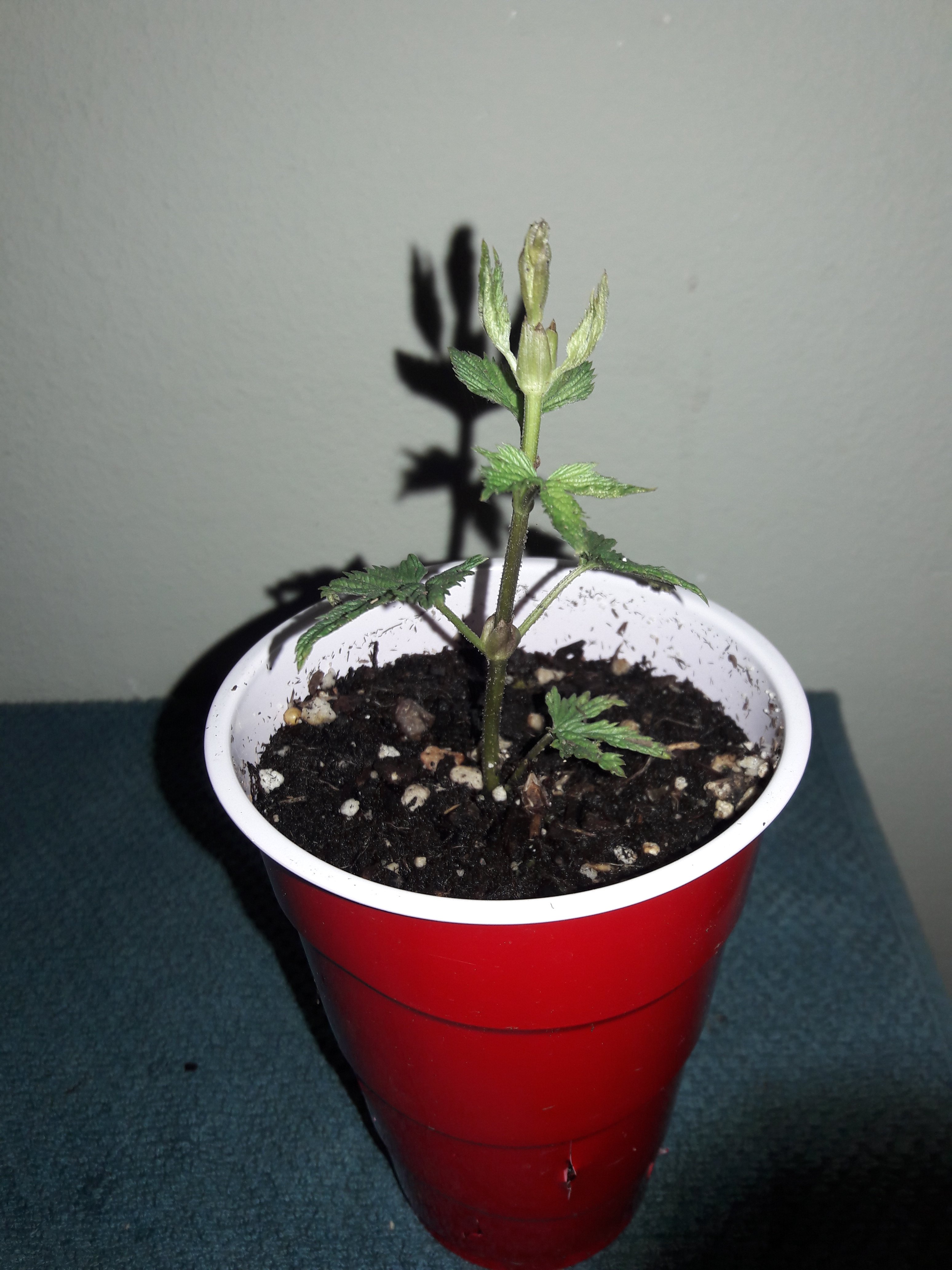You are using an out of date browser. It may not display this or other websites correctly.
You should upgrade or use an alternative browser.
You should upgrade or use an alternative browser.
Propagation from Cuttings?
- Thread starter Nate_503
- Start date

Help Support Homebrew Talk:
This site may earn a commission from merchant affiliate
links, including eBay, Amazon, and others.
All the time! When a flush of new growth appears in the spring all you have to do is to lay a few of those down and cover them with soil or compost. As the growing tips emerge you can do one of two things 1) Allow them to continue to grow like any other shoot or 2) You can throw some more soil on top of them and keep this up for as long as you want. What will happen is that you're artificially creating a rhizome as that portion that's covered with soil will begin to form roots and basically turn into a new rootstock.
After a week or two, you can slice the shoots very close to the mother plant and you'll probably see the growing tips whither for a day or two and then perk right back up. This is an indication that they've gotten over the shock of being separated from the crown and are growing on their own. Just dig up and transplant. The alternative would be to just leave them covered for the whole growing season and they'll harden off and be ready to be harvested in the fall. Been using this method for about 25 years.
After a week or two, you can slice the shoots very close to the mother plant and you'll probably see the growing tips whither for a day or two and then perk right back up. This is an indication that they've gotten over the shock of being separated from the crown and are growing on their own. Just dig up and transplant. The alternative would be to just leave them covered for the whole growing season and they'll harden off and be ready to be harvested in the fall. Been using this method for about 25 years.
CodeSection
Well-Known Member
- Joined
- Feb 4, 2018
- Messages
- 1,655
- Reaction score
- 819
Wow @Nate_503, I just basically asked this on my other thread (https://www.homebrewtalk.com/forum/threads/help-with-hop-planters.677128/#post-8840506).
Thanks for the information @B-Hoppy! Your explanation and process is much better than what was described in the article I read.
Thanks for the information @B-Hoppy! Your explanation and process is much better than what was described in the article I read.
That's very helpful. Thanks. I shouldn't have to buy new plants unless I want more variety then I suppose? I can dig it.
I am seeing success in propagating the same way I (legally) propagate cannabis. Take a nice healthy shoot, apply growth hormone, into solo cups on heat mat and wait. This is the impatient indoor method I suppose. Just did the same with basil to multiply plants. It's a good time for experimentation.
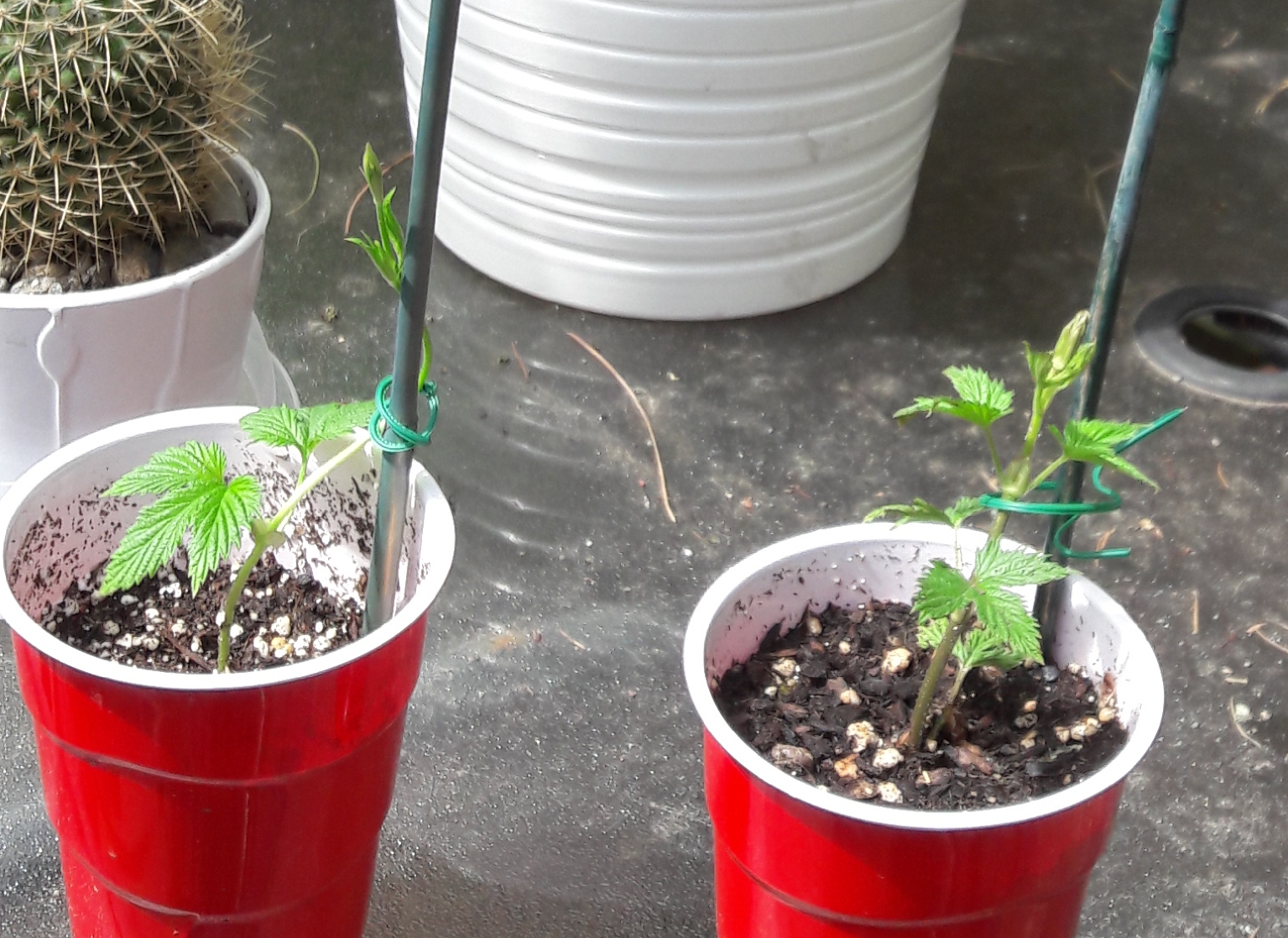
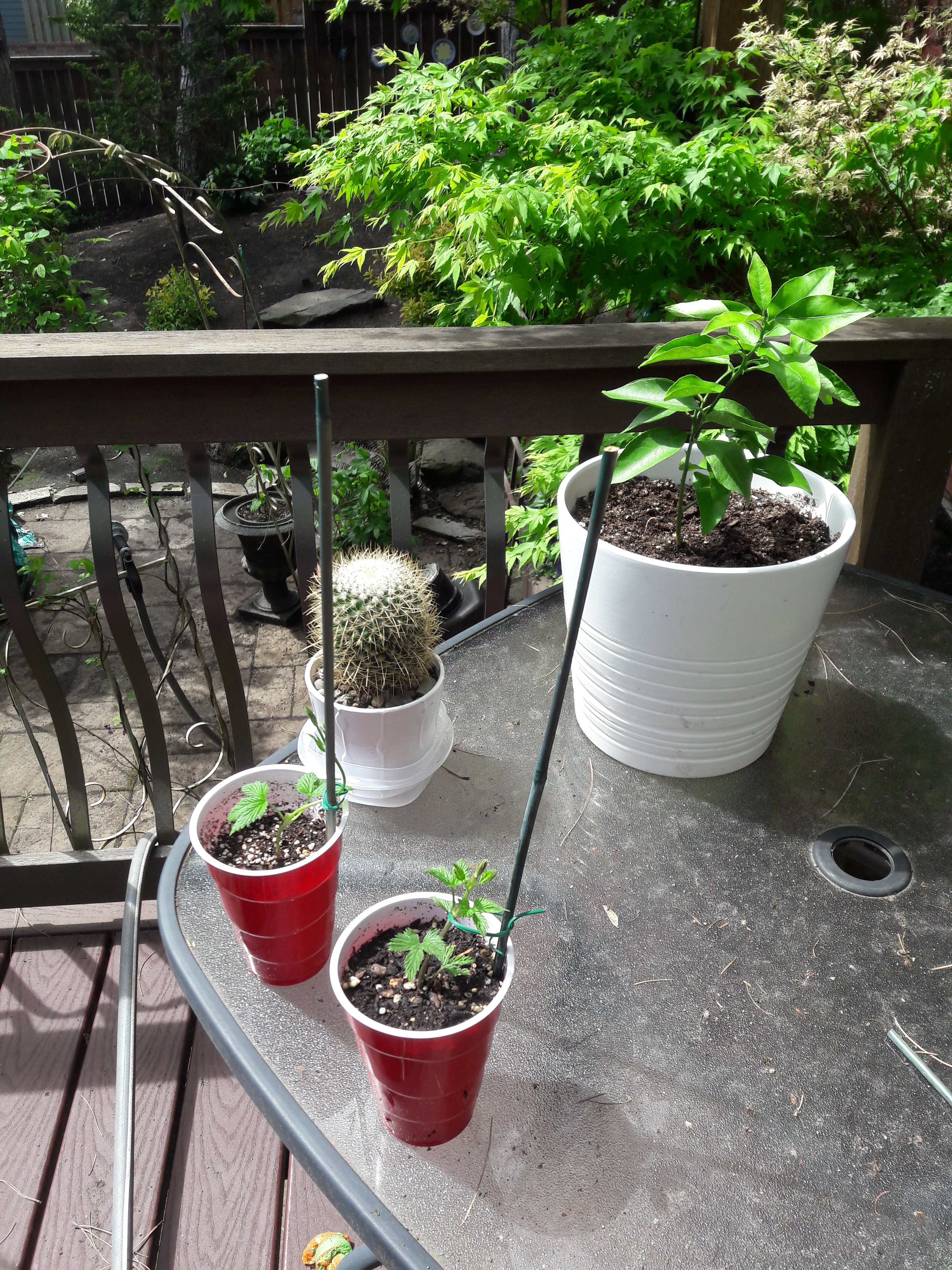
Wow @Nate_503, I just basically asked this on my other thread (https://www.homebrewtalk.com/forum/threads/help-with-hop-planters.677128/#post-8840506).
Thanks for the information @B-Hoppy! Your explanation and process is much better than what was described in the article I read.
I am seeing success in propagating the same way I (legally) propagate cannabis. Take a nice healthy shoot, apply growth hormone, into solo cups on heat mat and wait. This is the impatient indoor method I suppose. Just did the same with basil to multiply plants. It's a good time for experimentation.


CodeSection
Well-Known Member
- Joined
- Feb 4, 2018
- Messages
- 1,655
- Reaction score
- 819
....I am seeing success in propagating the same way I (legally) propagate cannabis. Take a nice healthy shoot, apply growth hormone, into solo cups on heat mat and wait. This is the impatient indoor method I suppose. Just did the same with basil to multiply plants. It's a good time for experimentation.View attachment 677526 View attachment 677527
What do you use for your rooting hormone?
verboten
With Low Expectations, you're rarely disappointed
I have had great success just planting my trimmings from when I prune. I had 4 plants out of 6 come back this year.

$27.29 ($13.64 / Count)
$41.99 ($21.00 / Count)
2 Pack 1 Gallon Large Fermentation Jars with 3 Airlocks and 2 SCREW Lids(100% Airtight Heavy Duty Lid w Silicone) - Wide Mouth Glass Jars w Scale Mark - Pickle Jars for Sauerkraut, Sourdough Starter
Qianfenie Direct

$10.99 ($31.16 / Ounce)
Hornindal Kveik Yeast for Homebrewing - Mead, Cider, Wine, Beer - 10g Packet - Saccharomyces Cerevisiae - Sold by Shadowhive.com
Shadowhive

$20.94
$29.99
The Brew Your Own Big Book of Clone Recipes: Featuring 300 Homebrew Recipes from Your Favorite Breweries
Amazon.com

$176.97
1pc Commercial Keg Manifold 2" Tri Clamp,Ball Lock Tapping Head,Pressure Gauge/Adjustable PRV for Kegging,Fermentation Control
hanhanbaihuoxiaoshoudian

$53.24
1pc Hose Barb/MFL 1.5" Tri Clamp to Ball Lock Post Liquid Gas Homebrew Kegging Fermentation Parts Brewer Hardware SUS304(Liquid Hose Barb)
Guangshui Weilu You Trading Co., Ltd

$7.79 ($7.79 / Count)
Craft A Brew - LalBrew Voss™ - Kveik Ale Yeast - For Craft Lagers - Ingredients for Home Brewing - Beer Making Supplies - (1 Pack)
Craft a Brew

$33.95
Five Star - 6022b_ - Star San - 32 Ounce - High Foaming Sanitizer
Bridgeview Beer and Wine Supply

$22.00 ($623.23 / Ounce)
AMZLMPKNTW Ball Lock Sample Faucet 30cm Reinforced Silicone Hose Secondary Fermentation Homebrew Kegging joyful
无为中南商贸有限公司

$39.22 ($39.22 / Count)
Brewer's Best Home Brew Beer Ingredient Kit - 5 Gallon (Mexican Cerveza)
Amazon.com

$58.16
HUIZHUGS Brewing Equipment Keg Ball Lock Faucet 30cm Reinforced Silicone Hose Secondary Fermentation Homebrew Kegging Brewing Equipment
xiangshuizhenzhanglingfengshop
![Craft A Brew - Safale S-04 Dry Yeast - Fermentis - English Ale Dry Yeast - For English and American Ales and Hard Apple Ciders - Ingredients for Home Brewing - Beer Making Supplies - [1 Pack]](https://m.media-amazon.com/images/I/41fVGNh6JfL._SL500_.jpg)
$6.95 ($17.38 / Ounce)
$7.47 ($18.68 / Ounce)
Craft A Brew - Safale S-04 Dry Yeast - Fermentis - English Ale Dry Yeast - For English and American Ales and Hard Apple Ciders - Ingredients for Home Brewing - Beer Making Supplies - [1 Pack]
Hobby Homebrew

$53.24
1pc Hose Barb/MFL 1.5" Tri Clamp to Ball Lock Post Liquid Gas Homebrew Kegging Fermentation Parts Brewer Hardware SUS304(Liquid Hose Barb)
yunchengshiyanhuqucuichendianzishangwuyouxiangongsi
I just cut mine back and noticed the white ones just under the soil.All the time! When a flush of new growth appears in the spring all you have to do is to lay a few of those down and cover them with soil or compost. As the growing tips emerge you can do one of two things 1) Allow them to continue to grow like any other shoot or 2) You can throw some more soil on top of them and keep this up for as long as you want. What will happen is that you're artificially creating a rhizome as that portion that's covered with soil will begin to form roots and basically turn into a new rootstock.
After a week or two, you can slice the shoots very close to the mother plant and you'll probably see the growing tips whither for a day or two and then perk right back up. This is an indication that they've gotten over the shock of being separated from the crown and are growing on their own. Just dig up and transplant. The alternative would be to just leave them covered for the whole growing season and they'll harden off and be ready to be harvested in the fall. Been using this method for about 25 years.
I left some and cut some. I didn't know what to do about them. Now I do.
Thanks
What do you use for your rooting hormone?
@CodeSection
The two most important natural auxins are indole-3-acetic acid or IAA, and IBA or indole-3-butyric acid.
I use a gel type formula which is butyric acid as its active ingredient. It is purple in color and applied liberally at the cut, before soil or growing medium. I am unsure as to how effective this actually is, but I have some left over from some attempted cloning last fall and figured it may help. I've got one bine in H2O right now and watching for roots before I go to the solo cup.
Hops growers could learn lots from cannabis growers, I believe. Many are so focused on detail and document what works and fails. And then they all disagree as to what is best practices and what is quality product.
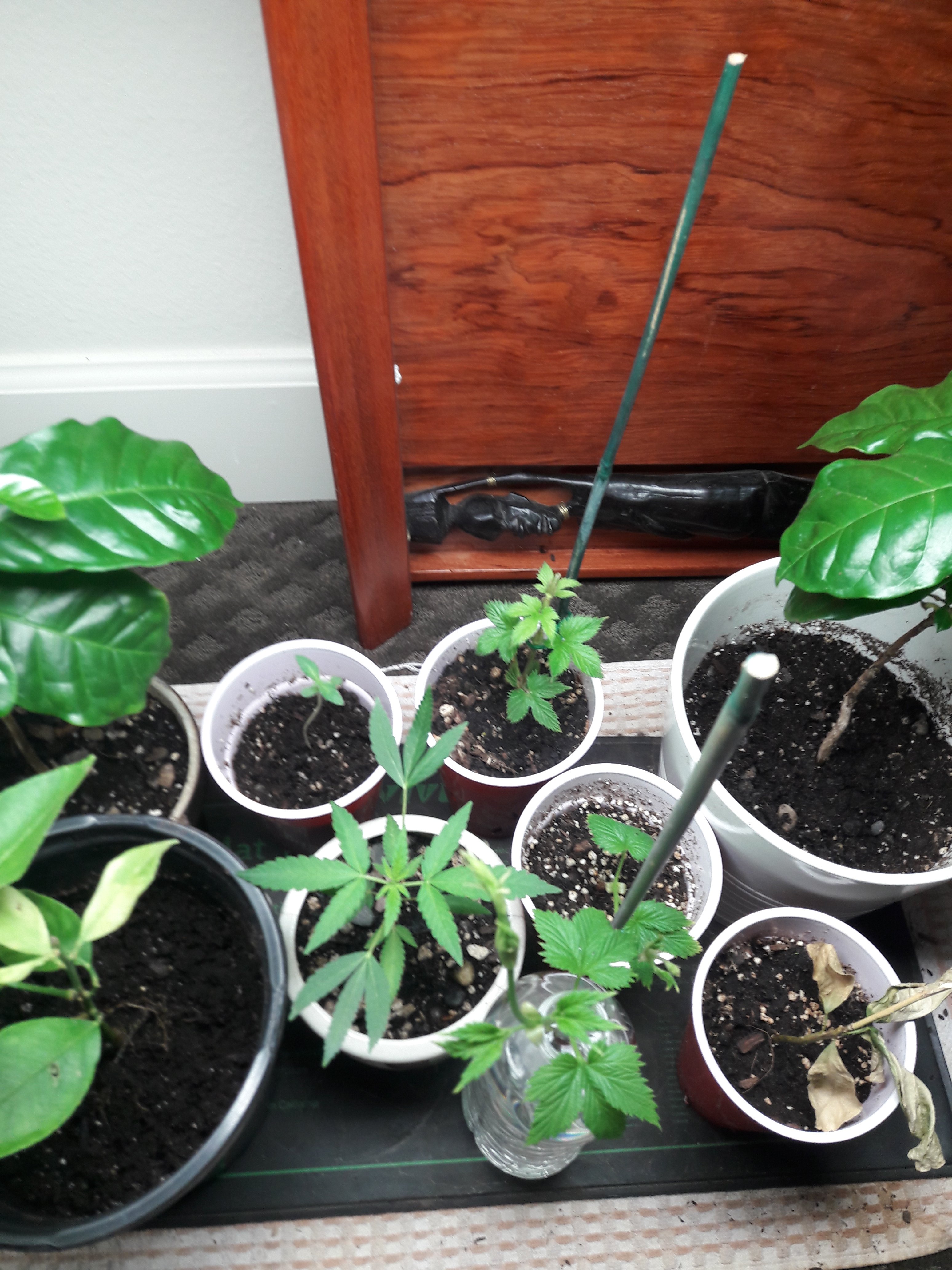
3 bines in training next to two cousin cannabis from seed in training on heat mat under T5 fluorescent grow lights, 2' from canopy. Everbody looks stoked except that gnarly, damaged lemon plant on botton right.
I have had great success just planting my trimmings from when I prune. I had 4 plants out of 6 come back this year.
That is a rad ratio. I think commercial growers get like 10%-20% seed viability in a broad sense. Hops really, really want to live!
Bigdaddyale
Well-Known Member
I use Aloe Vera. just wack off a hunk of Aloe Vera and stick the root end of the plant you want to grow in the gel then replant in soil@CodeSection
The two most important natural auxins are indole-3-acetic acid or IAA, and IBA or indole-3-butyric acid.
I use a gel type formula which is butyric acid as its active ingredient. It is purple in color and applied liberally at the cut, before soil or growing medium. I am unsure as to how effective this actually is, but I have some left over from some attempted cloning last fall and figured it may help. I've got one bine in H2O right now and watching for roots before I go to the solo cup.
Hops growers could learn lots from cannabis growers, I believe. Many are so focused on detail and document what works and fails. And then they all disagree as to what is best practices and what is quality product.
I like it! I've got two aloe plants and that seems like a totally viable solution. Never heard of that. Thanks!I use Aloe Vera. just wack off a hunk of Aloe Vera and stick the root end of the plant you want to grow in the gel then replant in soil
CodeSection
Well-Known Member
- Joined
- Feb 4, 2018
- Messages
- 1,655
- Reaction score
- 819
I use Aloe Vera. just wack off a hunk of Aloe Vera and stick the root end of the plant you want to grow in the gel then replant in soil
I have plenty of Aloe Vera plants. Thanks @Bigdaddyale!
verboten
With Low Expectations, you're rarely disappointed
I was really surprised when I saw how well they were growing last week, they are rooted solid and it was just a no cost attempt at more plants.That is a rad ratio. I think commercial growers get like 10%-20% seed viability in a broad sense. Hops really, really want to live!
I think one of the best things about that scenario is that they are already acclimated to your spot, as opposed to some random rhizome from somewhere else that has to adjust. Hops grow in an intelligent way and I learn a lot just by watching the trippy things they do. Every season they come stronger as they adapt to their specific place in the world. Way cool plants regardless of what you do with them. I want a living wall of hops, inside, in a classy way.I was really surprised when I saw how well they were growing last week, they are rooted solid and it was just a no cost attempt at more plants.

Oops, keep tabs on how much you use... Indole-3 acetic acid increased risk of impaired cognitive function in patients receiving hemodialysisThe two most important natural auxins are indole-3-acetic acid or IAA, and IBA or indole-3-butyric acid.
Thank God I'm not on HD. However, "Patients receiving hemodialysis (HD) have a higher risk of cognitive impairment and dementia than the general population" anyways.Oops, keep tabs on how much you use... Indole-3 acetic acid increased risk of impaired cognitive function in patients receiving hemodialysis
Neat. I'm about to transplant my hops out of their pots and into the ground. I also want to keep a part of them a little more geographically flexible. Next spring maybe I will bust out the rooting hormone when I go to prune the earliest shoots.
How long is the synthetic rooting hormone in the plant's system?
How long is the synthetic rooting hormone in the plant's system?
So, I thought I would try this out this spring. I pruned some leaves and covered the base of some shoots with a little dirt. I left it for roughly 10 days. After that I dug up the portion of the shoots that I had buried, cut it as close to the root ball as I could, dipped the base of the shoots in rooting hormone, pruned a little off the top, and potted them up.
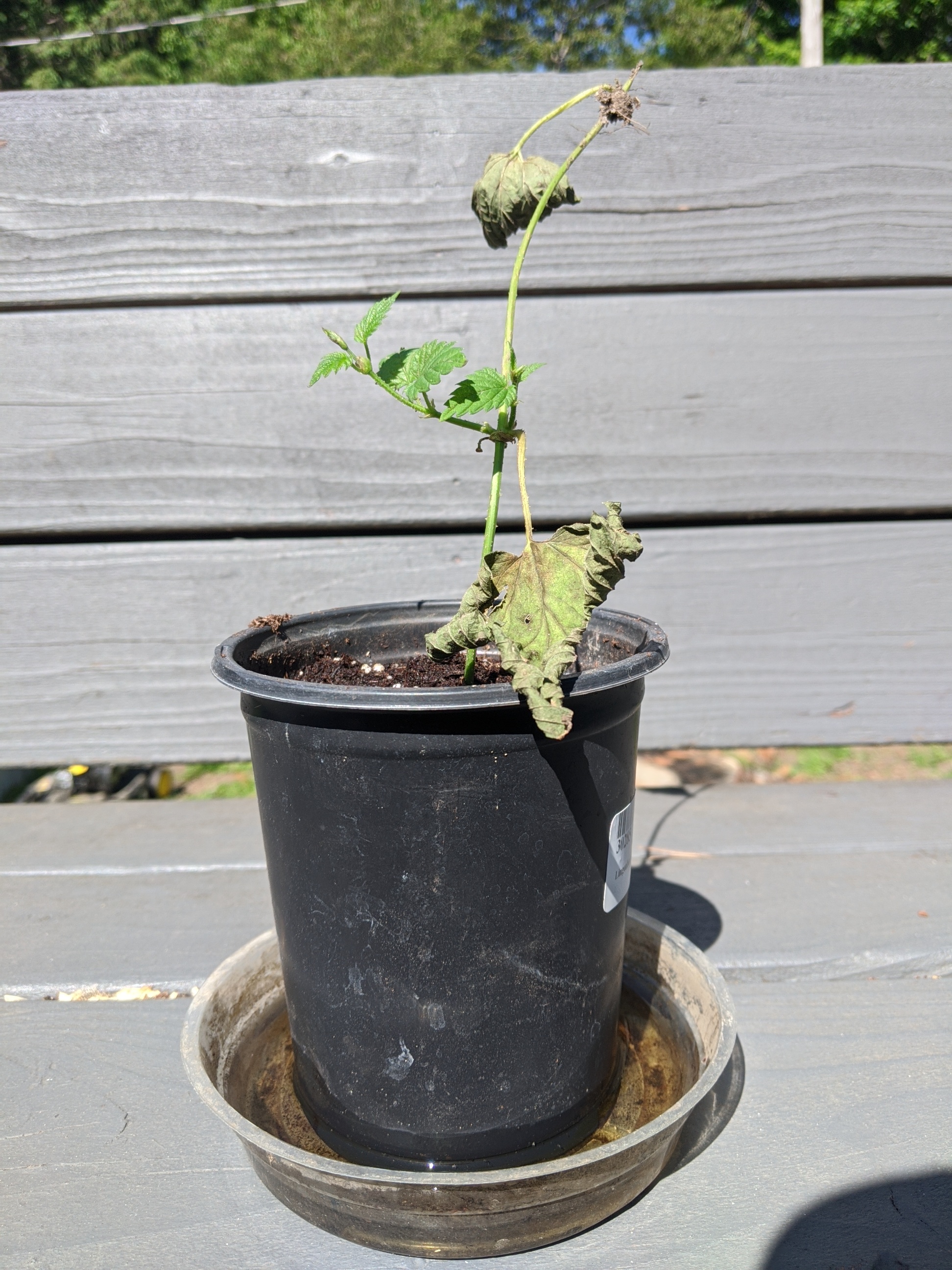
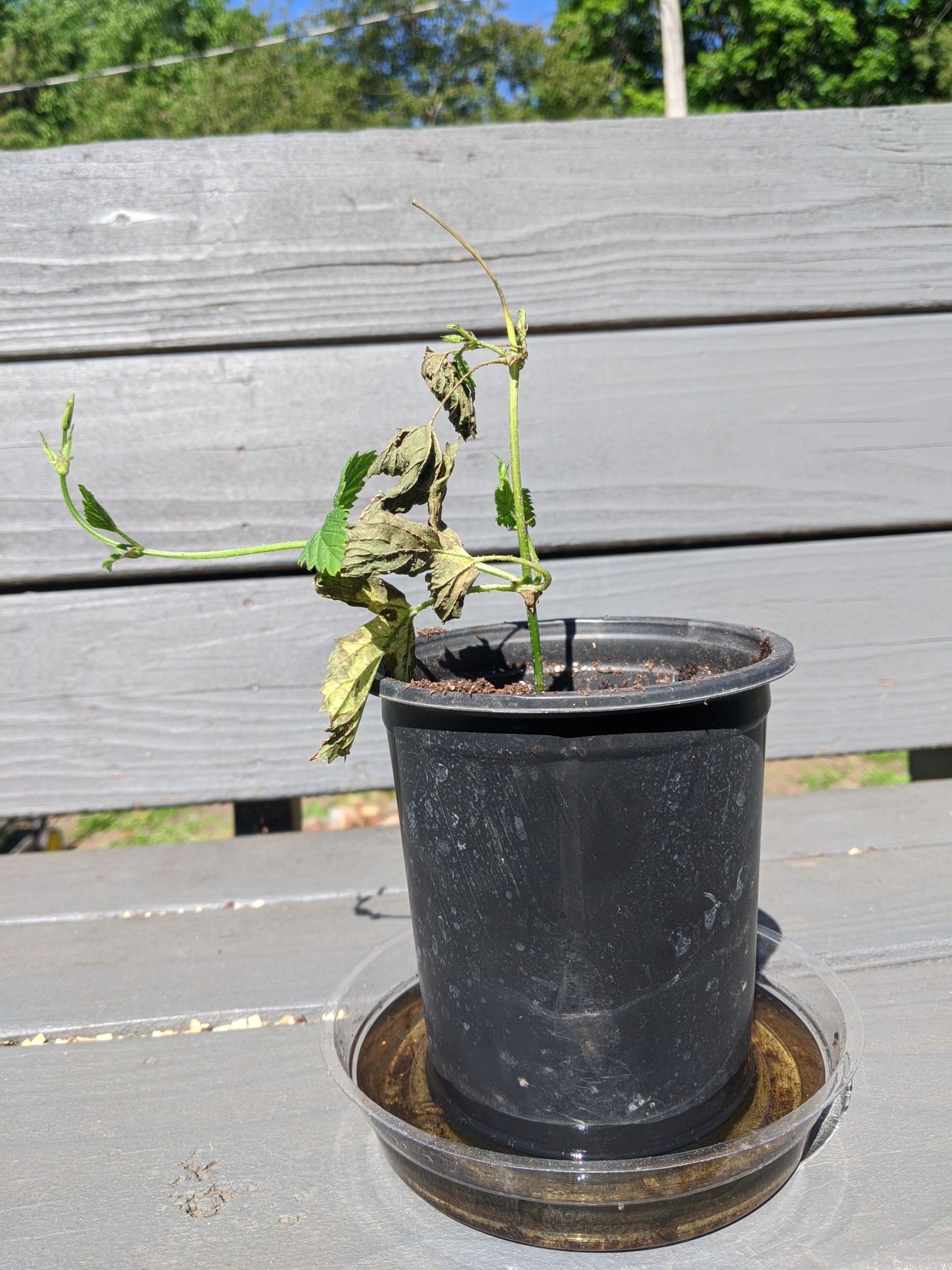
There were originally 3, but the other one quickly died.
I'm noticing that everything not between the roots-to-be portion and any of the nodes where new growth will occur, that seems to be extraneous and withers. The one that died had no nodes when I attempted to put it in the pot. Which makes sense.
This is how they've looked for a few days.
Any of you pros, does this look about right?


There were originally 3, but the other one quickly died.
I'm noticing that everything not between the roots-to-be portion and any of the nodes where new growth will occur, that seems to be extraneous and withers. The one that died had no nodes when I attempted to put it in the pot. Which makes sense.
This is how they've looked for a few days.
Any of you pros, does this look about right?
CodeSection
Well-Known Member
- Joined
- Feb 4, 2018
- Messages
- 1,655
- Reaction score
- 819
So, I thought I would try this out this spring. I pruned some leaves and covered the base of some shoots with a little dirt. I left it for roughly 10 days. After that I dug up the portion of the shoots that I had buried, cut it as close to the root ball as I could, dipped the base of the shoots in rooting hormone, pruned a little off the top, and potted them up.
View attachment 682957View attachment 682958
There were originally 3, but the other one quickly died.
I'm noticing that everything not between the roots-to-be portion and any of the nodes where new growth will occur, that seems to be extraneous and withers. The one that died had no nodes when I attempted to put it in the pot. Which makes sense.
This is how they've looked for a few days.
Any of you pros, does this look about right?
It looks like it is taking off! Congratulations!
I'm curious, two methods I have read about involves in one method covering the shoots with dirt like you did, but keep it there for the season to allow the roots to firmly establish themselves before transferring to another pot or location. The second method involves taking a cutting and dipping it into a root hormone and then planting it into some growing medium.
If I'm reading your post correctly, you are combining the two separate methods. I'm taking it that you read it somewhere. If so, did the author suggest this was a better method?
I found this article that includes a suggested propagation method. https://catalog.extension.oregonstate.edu/sites/catalog/files/project/pdf/em9115.pdf
When I have to send out germplasm from new varieties for propagation I usually just cover some of the new shoots in the early spring with compost or soil and let them root for a week or two before severing them from the mother plant. Just mark where you want to chop when you first bury them so you can do it without removing the soil/compost. Once severed, the actively growing tip will whither for a day or two until the roots along the cutting pick up the slack. Once it starts perking up again you can dig it up, pot it and ship it to where it has to go.
CodeSection
Well-Known Member
- Joined
- Feb 4, 2018
- Messages
- 1,655
- Reaction score
- 819
When I have to send out germplasm from new varieties for propagation I usually just cover some of the new shoots in the early spring with compost or soil and let them root for a week or two before severing them from the mother plant. Just mark where you want to chop when you first bury them so you can do it without removing the soil/compost. Once severed, the actively growing tip will whither for a day or two until the roots along the cutting pick up the slack. Once it starts perking up again you can dig it up, pot it and ship it to where it has to go.
And here I thought you had previously posted having them there for the season.....I guess I missed the 1-2 week part in your other post.
You can do it either way. If you let them go until fall, they'll harden off (form sort of a bark on the rhizome) over the course of the growing season. Done to make new starts in the spring, you use the advantage of them being very actively growing and can make things happen quickly under the right conditions (generally more rainfall and cooler temps). They're actually very easy plants to propagate.
CodeSection
Well-Known Member
- Joined
- Feb 4, 2018
- Messages
- 1,655
- Reaction score
- 819
You can do it either way. If you let them go until fall, they'll harden off (form sort of a bark on the rhizome) over the course of the growing season. Done to make new starts in the spring, you use the advantage of them being very actively growing and can make things happen quickly under the right conditions (generally more rainfall and cooler temps). They're actually very easy plants to propagate.
Thank you for providing more info! I think I will try both time periods......
If I'm reading your post correctly, you are combining the two separate methods. I'm taking it that you read it somewhere. If so, did the author suggest this was a better method?
I didn't read anything about combining the methods. This was purely a "what the heck, I'll give it a shot" kind of thing. If those are the two methods we've been talking about here, then I read this wrong and I botched it.
I figured that the only thing I am out is a little time.
And if I don't have any that live, I get a little bit of a reference for how they should look when I try again next year.
CodeSection
Well-Known Member
- Joined
- Feb 4, 2018
- Messages
- 1,655
- Reaction score
- 819
I didn't read anything about combining the methods. This was purely a "what the heck, I'll give it a shot" kind of thing. If those are the two methods we've been talking about here, then I read this wrong and I botched it.
I figured that the only thing I am out is a little time.
And if I don't have any that live, I get a little bit of a reference for how they should look when I try again next year.
Well, I think you are having success as the two plants are showing new tips and growth!
Well, these had tips when I cut them. The one that immediately died, I think it was because there was no tip on that section.
Similar threads
- Replies
- 0
- Views
- 532

